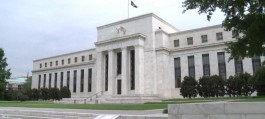The dollar held on to a seven-week high against major currencies on Tuesday as investors pondered the path of U.S. interest rates after a strong U.S. jobs report last week dampened bets on a major rate cut, while rising tensions in the Middle East weighed on risk sentiment.
Traders have radically changed their expectations for the path of monetary policy easing by the US Federal Reserve this year.
The CME Group’s FedWatch tool showed markets no longer expect a definitive rate cut in November and are pricing in an 86 percent chance of a 25 basis point cut. Traders are now expecting a 50 basis point cut only by December, down from more than 70 basis points just a week ago.
This has kept the dollar strong, rising to multi-week highs against the euro, pound and yen.
The dollar index, which measures the greenback's performance against other major currencies, was last at 102.41, just below a seven-week high of 102.69 touched on Friday.
St. Louis Federal Reserve President Alberto Musallam said he supports further interest rate cuts as the economy gains strength, but he suggested it was appropriate for the U.S. central bank to be cautious and not overly accommodative.
He added that further gradual rate cuts over time would likely be appropriate.
Investors will focus this week on the U.S. inflation report due on Thursday, as well as the minutes of the Federal Reserve’s latest September meeting due on Wednesday. Chinese markets are also set to open after a week-long holiday.
The offshore yuan rose slightly to 7.0594 yuan against the dollar in early trading.
The euro was at $1.098175 in early trading, not far from a seven-week low of $1.09515 hit last week.
The pound was at $1.3095, close to a three-week low of $1.30595 hit on Monday.
The yen rose slightly to 147.795 against the dollar in early trade after also falling to a seven-week low of 149.10 per dollar on Monday as traders pondered the likely near-term path of interest rates by the Bank of Japan.







































